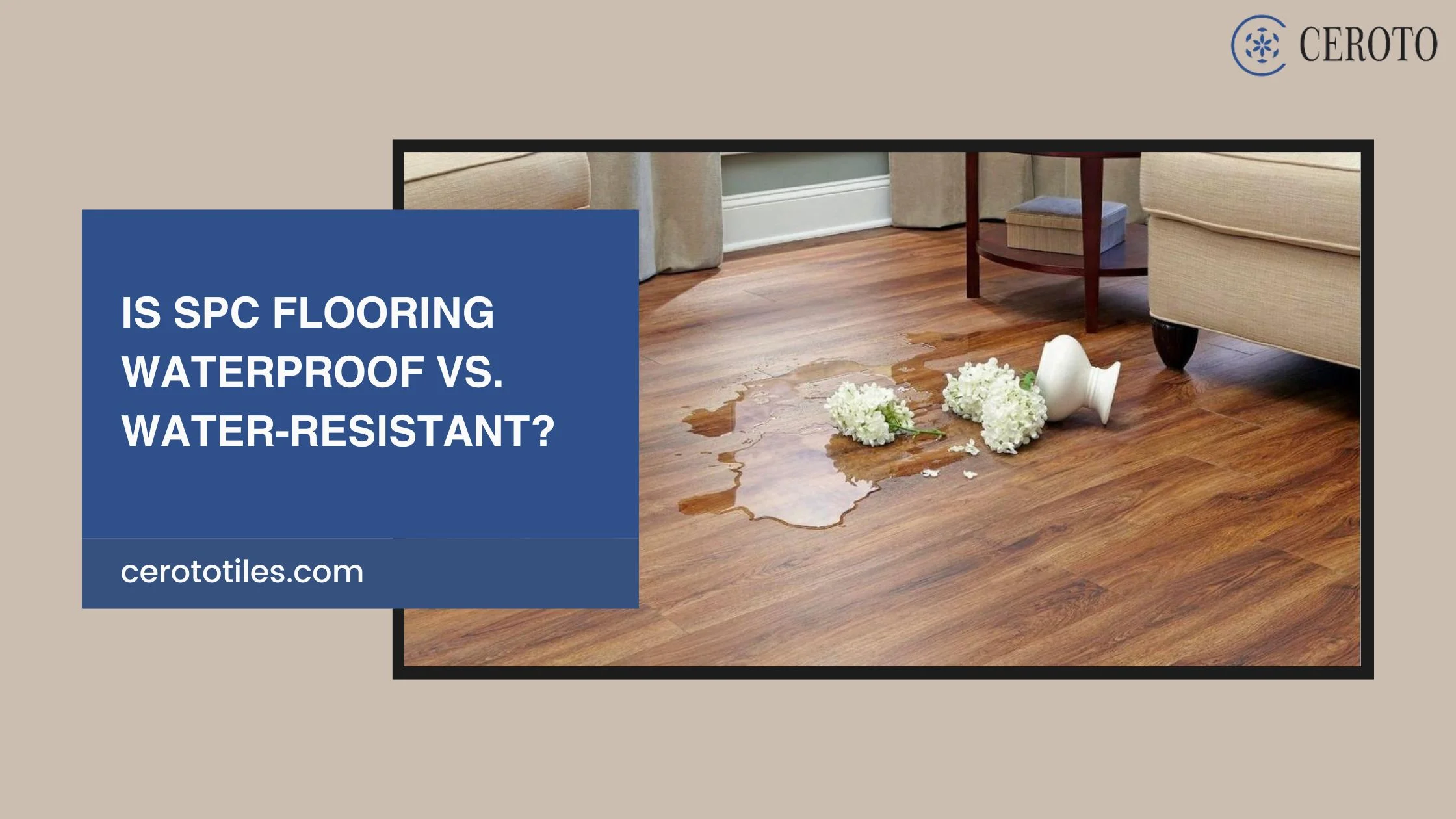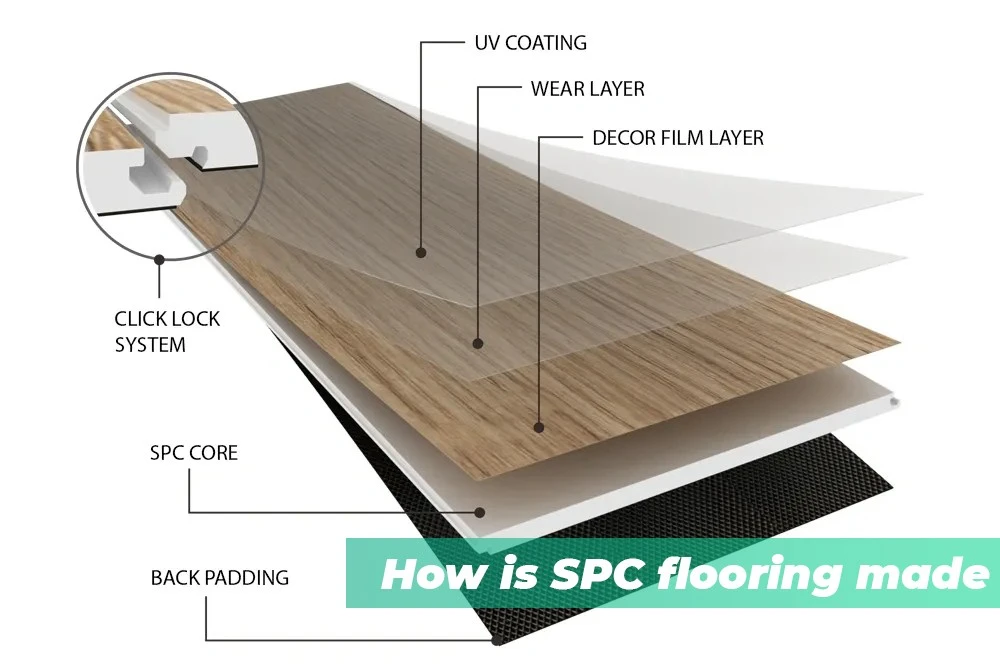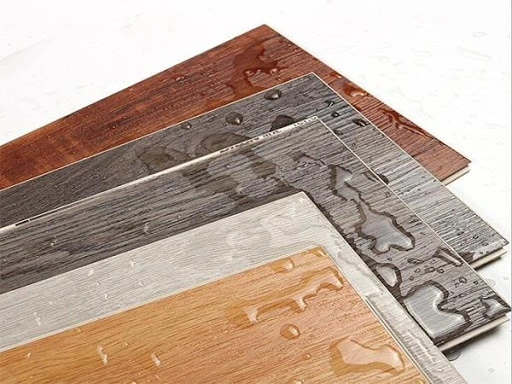
Is Spc Flooring Waterproof Vs. Water-resistant?
The choice of flooring should be appropriate, especially in areas where spilling of water occurs frequently. SPC flooring has been coming into the spotlight due to its excellent strength and flexibility. But one question arises: is it really waterproof or simply resistant?
Now, let's discuss the differences between waterproof and resistant flooring. We will also explore the composition and specification of SPC. In that way, you will be able to make your decision when remodeling your bathroom, kitchen, or any other kind of commercial space. Understanding how well SPC flooring can handle water will help you in choosing the right one.

Key Takeaways
-> One of the major reasons SPC flooring is rated as one of the best options concerning wet environments is because of its strength and waterproof nature.
-> The distinction between waterproof and water-resistant flooring lies in its former preventing water from getting through, while the latter only handles minimal moisture but not totally.
-> SPC flooring has a waterproof core and surface; hence, it's most fitted as a highly efficient barrier against both water and moisture.
-> It's an excellent option for bathrooms, kitchens, or places with possible risks of unwanted water presence.
-> Proper installation and good care for SPC flooring extend waterproofness over time.
Understanding SPC Flooring
The SPC floor is known as Stone Plastic Composite or rigid core flooring. It consists of a multi-layered flooring, which has become pretty famous. It combines the rigid core with a waterproof surface layer and a durable wear layer. This combination forms the SPC flooring to be much more potent, stable, and water-resistant than vinyl or laminate floors.

What is SPC Flooring?.
SPC flooring has excellent resistance and high performance. The rigid core is comprised of limestone and other minerals. Resists dents, scratches, and warping. Further on top of this core is the waterproofing layer that protects it from spills, splashes, and floods.
The Multi-Layer Construction
The SPC flooring is specifically designed for the multi-layer construction. It typically features these layers:
Wear Layer: This is a hard, scratch-resistant top layer that protects the floor from everyday wear.
Decorative Layer: A layer giving the floor the appearance of natural materials like wood or stone.
Rigid Core: The strong mineral-based core providing stability and durability.
Backing Layer: A layer resistant to moisture that seals and further supports the floor.
What really makes SPC flooring easy to install is its click-lock installation. It is a darling for renovation works and DIY projects. With top performances and versatile designs, the SPC flooring has become a sweetheart to every home and business.
SPC Flooring: Waterproof or Water-Resistant?
SPC flooring is outstanding in terms of its ability to handle water and moisture. It's often referred to as "waterproof," but there is some semantics between that and water resistance. Waterproof means that it does not let water in and stays safe with lots of water. Water-resistant means it could stand a little moisture but not much, like in bathrooms or kitchens. Luckily, the SPC flooring is genuinely waterproof, making it excellent for places getting wet all the time, such as homes and business premises.

Let's look at how SPC flooring compares to other types:
| Waterproof Flooring | Water-Resistant Flooring |
| Impervious to water, can withstand prolonged exposure without damage | Can handle some moisture but may not be suitable for areas with frequent water exposure |
| Provides complete protection against water damage | Offers limited protection against water damage |
| Ideal for bathrooms, kitchens, and other moisture-prone areas | May not be the best choice for high-moisture environments |
SPC flooring tops the list to be installed in areas that get wet because it is water resistant. With several layers and a strong structure, it performs ideally when installed on a wet surface. It is long-lasting and maintains your space safe and dry.
Conclusion
When it comes to water-resistant flooring, SPC stands out as the top choice for flooring. Unlike waterproof flooring, which offers some protection from spills and splashes, SPC flooring is completely waterproof. This means it can handle anything from heavy rain followed by pets to the occasional spill in the kitchen, all without wobbling, swelling or staining
SPC flooring is an excellent choice for homeowners looking for longevity, low maintenance and peace of mind. Whether you’re renovating a bathroom, kitchen, or any area that’s extremely humid, Ceroto Tiles’ SPC flooring ensures a long-lasting appearance and performance. This is an ideal investment for those who want their floor to look as wonderful as it did, no matter what life throws at them.
FAQ
1. What is the difference between waterproof and water-resistant flooring?
Waterproof flooring won't let water in and stays safe even with lots of water. Water-resistant flooring can handle some moisture but isn't good for places like bathrooms or kitchens.
2. Is SPC flooring considered waterproof?
Yes, SPC (Stone Plastic Composite) flooring is seen as waterproof. It has a special design with a strong core and a layer that stops water. This makes it great for areas that get a lot of water.
3. What are the key features of SPC flooring?
SPC flooring has a special design with a strong core, a waterproof top layer, and a tough wear layer. These features make it very strong, stable, and good at keeping out moisture. It's better than old vinyl or laminate floors in many ways.
4. Can SPC flooring be installed in bathrooms and kitchens?
Yes, SPC flooring is perfect for bathrooms, kitchens, and other wet areas. It's waterproof and has a strong core. This makes it a long-lasting and trustworthy choice for places that get a lot of water.
5. How does SPC flooring compare to traditional vinyl or laminate floors in terms of moisture resistance?
SPC flooring is much better at keeping out moisture than old vinyl or laminate floors. It has a strong core and a waterproof top layer. This means it's safer from water damage, mold, and mildew. It's the better choice for areas with a lot of moisture.

